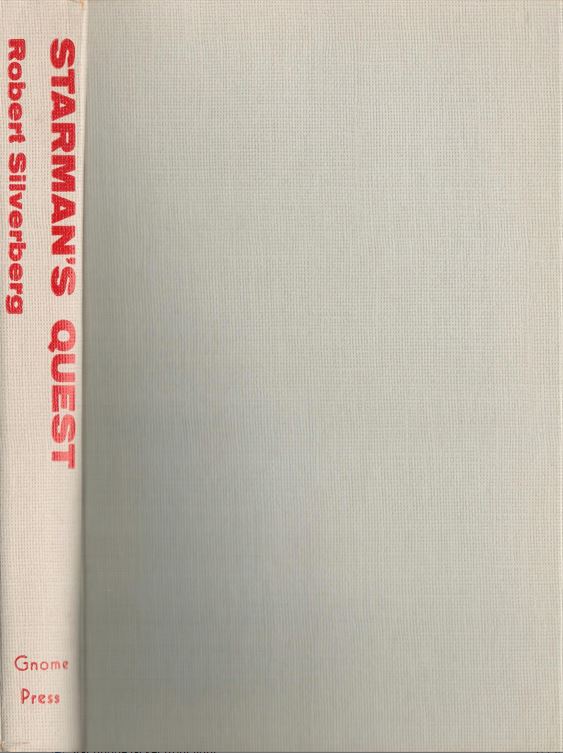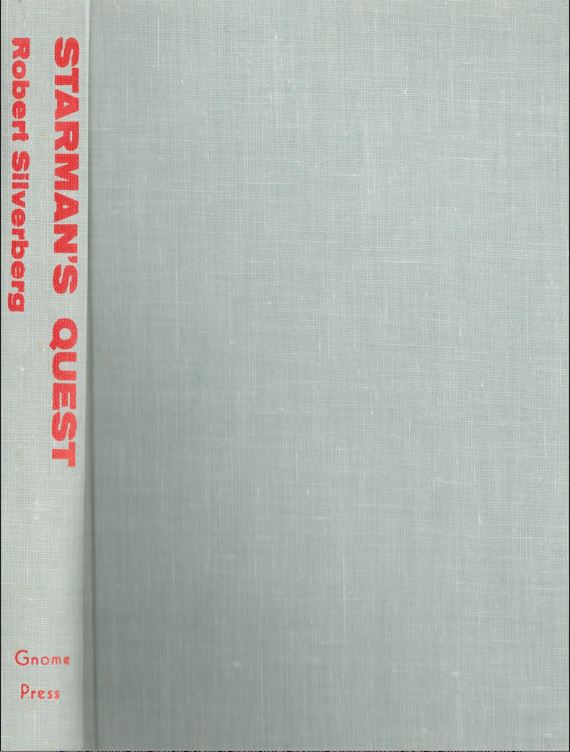Comments
Robert Silverberg (1935- ) published his first novel, Revolt on Alpha C, at the age of 20 while still attending Columbia University. Publishing a story or even several as a teen – Silverberg had sold three in 1954 and 1955 – was by no means unusual in f&sf: teen prodigies flourished in the Golden Age. Silverberg himself was a noted fanzine writer from the age of 14. What happened next was nearly unprecedented, however. Silverberg saw about 40 stories published in 1956 and more than 80 in 1957. The number dropped back to about 40 again in 1958 but he had an excuse. That year saw more than half a dozen novels appear under his name or some of his innumerable pseudonyms. (As many as a hundred more stories under pseudonyms published during those three years may have slipped by the database compilers, though.) He only increased his pace from there. At his peak it’s estimated that he wrote 3,000,000 words a year, more than even the most crazed pulpster.
He proved that speed could rub shoulders with excellence: f&sf works published in the decade from 1967 to 1976 picked up 16 Nebula Award nominations, including an unmatchable nine for novels. A Time of Changes won the Nebula and so did two short stories and a novella, while a different novella won a Hugo Award in the same period. Several major life crises hit around that time and he announced a premature retirement in 1975. It did not – could not – last. In 1980 he started to write again, slowed to what for him was a crawl. Why, he’s hardly written even a novel a year and won only three more Hugo and Nebula Awards since.
Stan Mack was the artist and coincidentally, he is also alive as of early 2023, the last of each breed. That allowed me to grab his autograph on a book already signed to (a different) Steve.
Such doubles are extremely rare. I have one other — an ancient Edd Cartier on George O. Smith’s Pattern for Conquest – and I’ve seen mentions online, but they are true collectibles.
Gnome Notes
The cover shows two teens in space suits, obviously another attempt to crack the young adult (“juvenile” as it was then called) market without it being stated overtly. The title was likely calculated to point back to Undersea Quest, also for the teen market. Robert Silverberg was all of 23 when he wrote this, even though it was at least his tenth novel to be published. It was also his third Gnome title, although the first two were as by Robert Randall, in collaboration with Randall Garrett (see The Shrouded Planet and The Dawning Light).
P. Schuyler Miller, in the December 1959 Astounding, advised readers about savings:
Some economics: if you order this or any other Gnome Press book through your bookstore, you pay the full price I have listed [$3.00]. If you buy directly from the publisher through his “Pick-a-Book” plan … you can get the price down as low as $1.20.
Greenberg’s seeming self-sabotage can be justified to a small extent. His primary market for a juvenile would be libraries, far more likely to order books at their full price. Appealing to genre readers trained to discounts by book clubs certainly increased his total sales and brought in an improved cash flow. Evidence that he depended on sales almost completely through his Pick-a-Book catalogs is found on the back panels of books printed from 1958 through 1961. The books published in those years are simply not mentioned. Why he did not take this obvious step is unfathomable.
Currey has several inconsistencies. In both CURREY and the 1979 first edition, the date is listed as 1959. Both CHALKER and KEMP list the date as 1958, which matches the copyright page and the “58” prefix of the Library of Congress Catalog Card Number. However, Kirkus Reviews gave the expected publication date as February 1, 1959. Greenberg evidently forgot to submit the book for copyright registration, so no more accurate date is available. Gnome’s next title, The Path of Unreason, also states a 1958 copyright and a “58” LoC Number, but it unquestionably belongs in mid-1959. Therefore, I’m forced to give the publication date as 1959.
To continue the oddities, CURREY lists the title as Star Man’s Quest, three words, which is inconsistent with any spelling on the book itself. The 1979 Currey lists two states, (A) Dark blue-gray boards, spine lettered in yellow and (B) Gray cloth, spine lettered in red, which matches CHALKER. The 2002 CURREY Revision lists a gray boards variant and inserts it between the other two. Therefore the (B) variant in the first edition is not the same as the (B) variant for the 2002 revision. I have not seen this change mentioned anywhere, and it is sure to be confusing.
Reviews
Floyd C. Gale, Galaxy Science Fiction, December 1959
Exciting story ingredients abound, but too many happenstances and line-of-least-resistance writing steal too much of its effectiveness.
Contents and Original Publications
• “Prologue” (original to this volume).
• Chapters 1-19 (original to this volume).
Bibliographic information
Starman’s Quest, by Robert Silverberg, 1959, [no copyright registration], Library of Congress Catalog Card Number 58-8767, title #73, back panel #40, 185 pages, $3.00, 5000 copies printed, 2000 bound 1958, 1000 bound 1960?, rest remaindered. Hardback. Cover by Stan Mack. “First edition” on copyright page. No printer designated. Back panel: 35 titles. Gnome Press address given as “P. O. Box 161, Hicksville, N. Y.
Variants, listed in order of priority
1) (CURREY A), Dark blue-gray boards, spine lettered in yellow.
2) (CURREY B), Gray boards, spine lettered in red.
3) (CURREY C), Gray cloth, spine lettered in red.
Images








